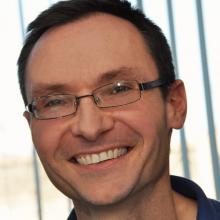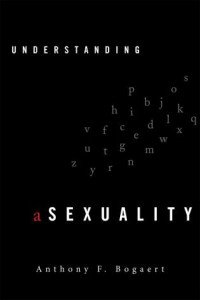Anthony Bogaert, Brock University – Asexuality Studies
 The more we learn about human sexuality, the more complicated it seems.
The more we learn about human sexuality, the more complicated it seems.
Anthony Bogaert, a psychologist at Brock University, chronicles an often-overlooked section of human sexuality: asexuality.
Dr. Anthony Bogaert is Professor of Health Sciences and Psychology. He has taught human sexuality courses at the university level for over 20 years. He has published extensively on various aspects of human sexuality, including on the development of sexual orientation, the coming out experience in sexual minorities, gender differences in sexuality, and on asexuality. He is the author of the recent book Understanding Asexuality. He is also the recipient of the Chancellor’s Chair for Research Excellence and the Distinguished Researcher and Creativity Award at Brock University in the Niagara Region of Canada.
Human Asexuality
![]()
Human asexuality can be defined as an overall lack of sexual attraction.
Some people have an enduring lack of sexual interest in–or no lustful attractions to–other people. Although some may still have some “solitary” sexual desire, other asexual people effectively exhibit no desire or interest in sexual stimulation whatsoever.
 Asexuality can be understood within a sexual orientation framework. So, some people are attracted to the opposite sex–heterosexual; some attracted to the same sex–homosexual; some attracted to both sexes–bisexual; and some are attracted to neither sex–asexual.
Asexuality can be understood within a sexual orientation framework. So, some people are attracted to the opposite sex–heterosexual; some attracted to the same sex–homosexual; some attracted to both sexes–bisexual; and some are attracted to neither sex–asexual.
Research also suggests that the origins of asexuality are similar to traditional sexual orientations; indeed, insofar as they are likely rooted in early development.
Although there is no definitive figure, about 1% of the population may be asexual.
Why is asexuality interesting and important to study? Aside from providing information on an understudied minority, it also provides a unique opportunity to view sexuality through a new lens, providing new insights into the mysteries of sex.
For example, many asexual people still have strong romantic attractions, so they demonstrate that sex and romantic love can be separate or “de-coupled,” even in sexual people.
Asexual people also challenge, especially if they are comfortable with themselves, what it means to have a sexual disorder or problem. Taking an “asexual view” on humans, we also see how deeply embedded sex is in our worldview and culture—from the ubiquity of the nude form in art, to using sex to sell car wax, to the latest political sex scandal, to twerking singers on MTV.
Taking an asexual view also shows the strange complexity of sex, with its odd preoccupations, attractions, and jealousies. Sex can also make us distort reality.
Sex is also, of course, part of the great story of life—and full of passion and pleasure for many people, and a requirement to propagate our species—but the mystery and complexity of sex makes understanding asexuality all the more necessary.
Read More: Understanding Asexuality


